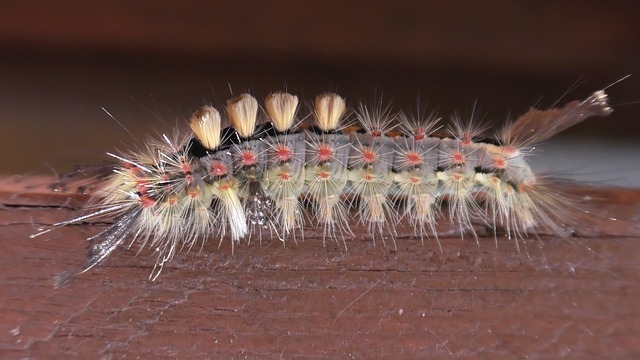A Guide to Tussock Moths
Some insects are far more harmful to your trees’ growth than others. Pests like the mountain pine beetle and emerald ash borer can damage your trees beyond repair. But even the most harmless insects can make your trees look less impactful. One of the most annoying but relatively harmless insects is the tussock moth. Let’s take a look at what these moths are, how they impact your trees, and what you can do to get rid of them.
What Is a Tussock Moth?
A tussock moth is a common pest found on evergreen and deciduous trees alike. These moths start their lives as larvae, gradually growing into fuzzy caterpillars that feed on the leaves and fruits in your yard without discrimination. They can infest any type of tree and feed off of any type of growth.
These moths are most commonly found in the spring and summer months after they hatch as caterpillars. The caterpillars have black or dark-colored bodies and long gray or tan hairs, making them look fuzzy. Though they look fuzzy, the hairs can cause irritation if you come into contact with them. After they mature, the caterpillars create cocoons and emerge in late spring and early summer as full-grown moths.
Are They Actually Harmful?
The caterpillars feed on leaves and fruits on your trees. The more they feed and the more numerous the caterpillars are, the more leaves they’ll eat. This can leave your trees looking sparse at best and completely free of leaves at worst. However, this typically won’t hurt the tree. It will just hurt the way it looks.
That doesn’t mean that tussock moths aren’t harmful—they’re just not harmful to your trees. Since tussock moths can sting you, they put you and your loved ones at risk when they’re covering your trees. For most people, their stings simply cause a rash and skin irritation that causes red welts and some swelling. However, some people may be more sensitive to the hairs and may experience some pain or more intense swelling.
The important thing to remember is that tussock moths are not poisonous or entirely detrimental to your trees’ health.
How Can You Get Rid of Them?
Tussock moth mitigation isn’t something you can do on your own. Instead, you’ll need to work with an experienced tree care team. The treatments used can vary from applications of insecticide to using other insects to control the tussock moth population. Your tree care expert will be able to determine which option will work best for your yard.
Don’t Let a Tussock Moth Infestation Go Untreated
If you suspect that you have a tussock moth infestation on your property, don’t ignore it. If you do, you risk letting the insects spread and do serious damage to your trees’ canopies. As soon as you notice a problem, contact the team at Root Tree Service. Our dedicated plant health care experts will assess the condition of your trees and establish a treatment plan to get rid of the moths.
Go Back What Is a Tussock Moth?
A tussock moth is a common pest found on evergreen and deciduous trees alike. These moths start their lives as larvae, gradually growing into fuzzy caterpillars that feed on the leaves and fruits in your yard without discrimination. They can infest any type of tree and feed off of any type of growth.
These moths are most commonly found in the spring and summer months after they hatch as caterpillars. The caterpillars have black or dark-colored bodies and long gray or tan hairs, making them look fuzzy. Though they look fuzzy, the hairs can cause irritation if you come into contact with them. After they mature, the caterpillars create cocoons and emerge in late spring and early summer as full-grown moths.
Are They Actually Harmful?
The caterpillars feed on leaves and fruits on your trees. The more they feed and the more numerous the caterpillars are, the more leaves they’ll eat. This can leave your trees looking sparse at best and completely free of leaves at worst. However, this typically won’t hurt the tree. It will just hurt the way it looks.
That doesn’t mean that tussock moths aren’t harmful—they’re just not harmful to your trees. Since tussock moths can sting you, they put you and your loved ones at risk when they’re covering your trees. For most people, their stings simply cause a rash and skin irritation that causes red welts and some swelling. However, some people may be more sensitive to the hairs and may experience some pain or more intense swelling.
The important thing to remember is that tussock moths are not poisonous or entirely detrimental to your trees’ health.
How Can You Get Rid of Them?
Tussock moth mitigation isn’t something you can do on your own. Instead, you’ll need to work with an experienced tree care team. The treatments used can vary from applications of insecticide to using other insects to control the tussock moth population. Your tree care expert will be able to determine which option will work best for your yard.
Don’t Let a Tussock Moth Infestation Go Untreated
If you suspect that you have a tussock moth infestation on your property, don’t ignore it. If you do, you risk letting the insects spread and do serious damage to your trees’ canopies. As soon as you notice a problem, contact the team at Root Tree Service. Our dedicated plant health care experts will assess the condition of your trees and establish a treatment plan to get rid of the moths.
